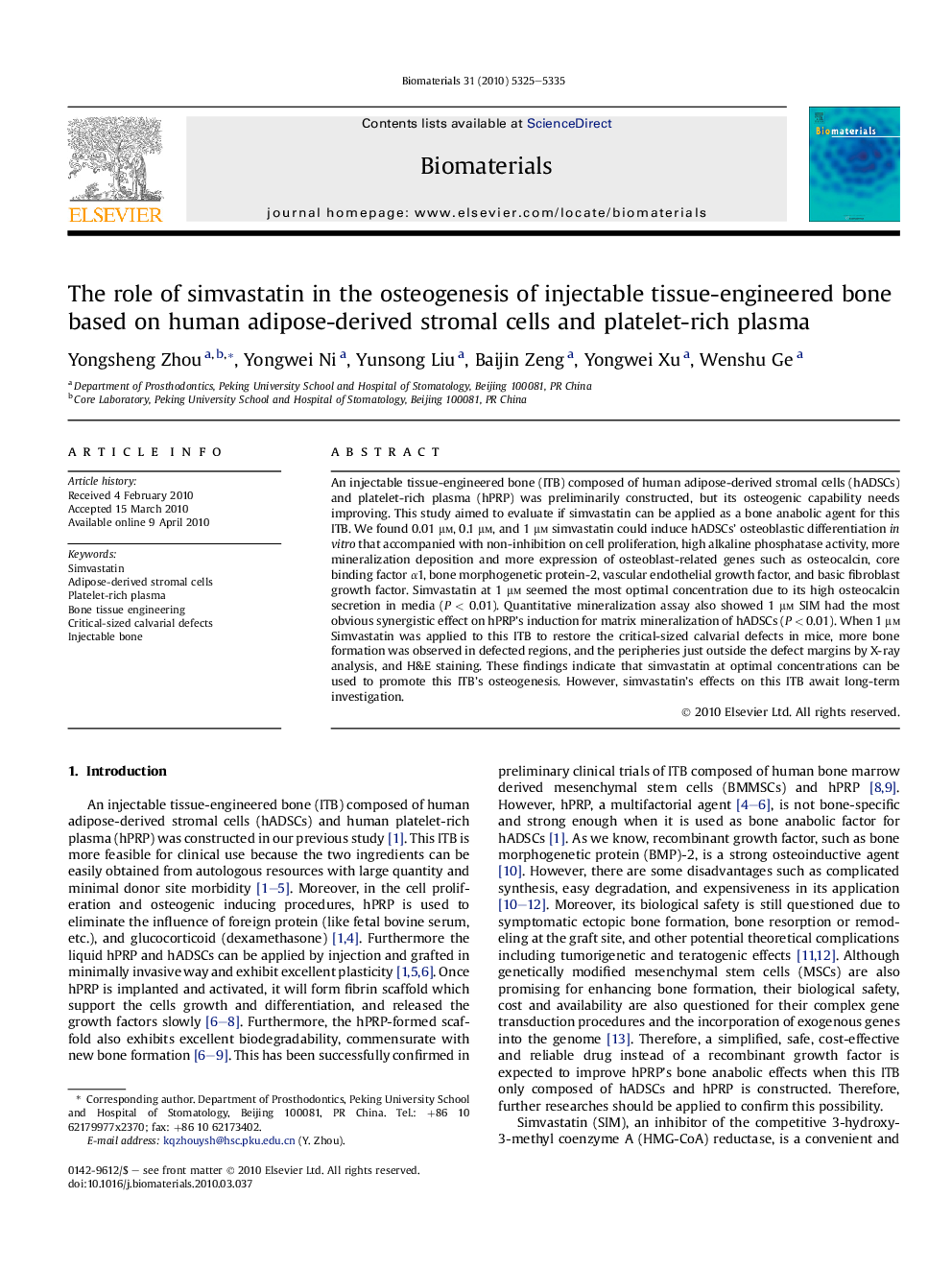| Article ID | Journal | Published Year | Pages | File Type |
|---|---|---|---|---|
| 8873 | Biomaterials | 2010 | 11 Pages |
An injectable tissue-engineered bone (ITB) composed of human adipose-derived stromal cells (hADSCs) and platelet-rich plasma (hPRP) was preliminarily constructed, but its osteogenic capability needs improving. This study aimed to evaluate if simvastatin can be applied as a bone anabolic agent for this ITB. We found 0.01 μm, 0.1 μm, and 1 μm simvastatin could induce hADSCs’ osteoblastic differentiation in vitro that accompanied with non-inhibition on cell proliferation, high alkaline phosphatase activity, more mineralization deposition and more expression of osteoblast-related genes such as osteocalcin, core binding factor α1, bone morphogenetic protein-2, vascular endothelial growth factor, and basic fibroblast growth factor. Simvastatin at 1 μm seemed the most optimal concentration due to its high osteocalcin secretion in media (P < 0.01). Quantitative mineralization assay also showed 1 μm SIM had the most obvious synergistic effect on hPRP’s induction for matrix mineralization of hADSCs (P < 0.01). When 1 μm Simvastatin was applied to this ITB to restore the critical-sized calvarial defects in mice, more bone formation was observed in defected regions, and the peripheries just outside the defect margins by X-ray analysis, and H&E staining. These findings indicate that simvastatin at optimal concentrations can be used to promote this ITB’s osteogenesis. However, simvastatin’s effects on this ITB await long-term investigation.
